Check it out! Here is an obscure guitarist with an even more obscure instrument.
His name is Antonio Montaño, who I learned from Marco Bazzoti (good friend to Harpguitars.net in Milan) was a (Spanish, or Portuguese?) blind singer and famous player of the “guitarra-tiorba,” author of songs and poeta repentista (improvisational poet), who died in 1816.
The image was recently discovered In the Biblioteca Nacional de España (Milan) by Harpguitars.net member Carlos Beceiro.
It is a nice visual record – via a decent drawing – of Montaño with a strange instrument that I presume he actually played. I would imagine that the headstock accurately depicts a typical 5-course double-strung neck of the period (Spain was then known for 6-course instruments as well), and an accurate count of ten strings is also drawn on the neck – though not doubled. With this artistic license, we don’t know if the 16 treble strings are meant to depict 16 single strings or 8 double courses. We also can’t know the string material (other than compared to the below). Or perhaps the artist was simply showing a stylized representation of the entire instrument, string configuration and all.
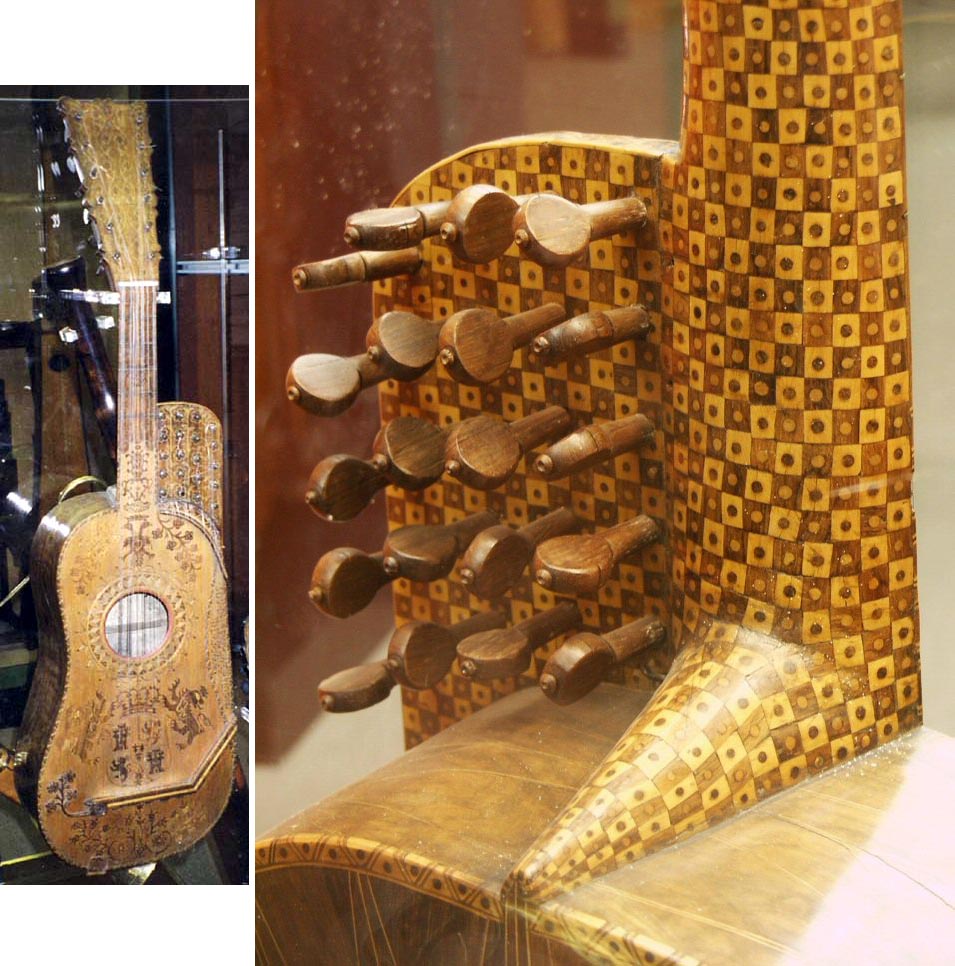
The only other historical instrument I have come across remotely similar to Montaño’s is this one: the well-known – and stunning – instrument built by Rafael Vallejo of Granada, c.1790, allegedly for King Charles IV of Spain.
At left is the instrument, which I shot years ago at the V&A museum (which, tragically, has now moved their spectacular musical instrument collection to the basement until further notice). It has 6 double gut courses on the neck and 20 strings arranged in 10 courses on the body, all tuned by full-size friction tuners mounted in the appropriately-sized slab jutting out of the body (interesting that piano or other tuning pins were not used). Baines states that these trebles should be wire.
Was Montaño’s instrument a less ornate copy of the “famous” instrument? It appears to be very similar, with 5 courses instead of 6 (not unexpected) and possibly 8 wire courses instead of 10.
I have no idea what the artist is illustrating for these treble string tuners, which just poke out of the rim…presumably, he would have drawn a friction tuner slab-mount if the instrument had had one. More to the musical point, did Montaño use the “novelty” strings of what was – and still is, by most standards – an unusual “psaltery-guitar”? (for us today, also a type of harp guitar)
And there is still the matter of the record of his playing of the “guitarra-tiorba” – which, in any country or period would refer only to a guitar with a theorboed headstock (with extra bass strings), not this. Did he play a Spanish/Portuguese form of that instrument as well? Or was the term used simply because there was no other way to describe his strange instrument? (Reminiscent of “harp guitar” as vernacular today…)
So far, Antonio Montaño and his curious instrument remain a tantalizing mystery.

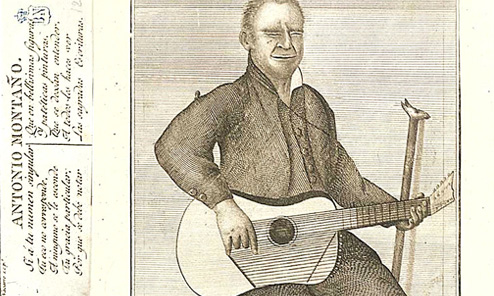
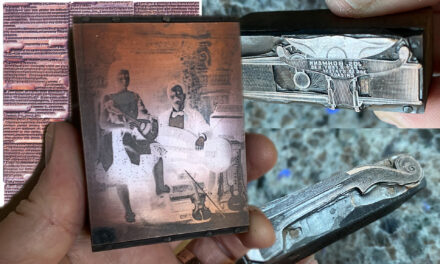
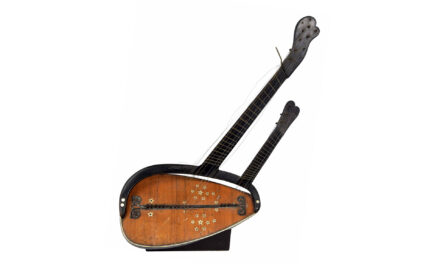
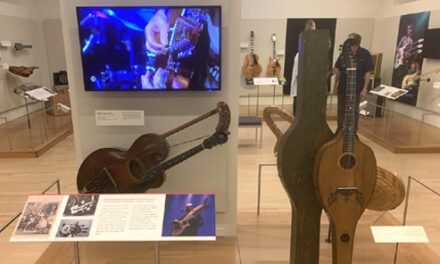

Wow! Mr.John said about the super trebles!
The V&A instrument collection is being shown at the Horniman Museum. It will be there until March 2013.
http://www.horniman.ac.uk/exhibitions/current_exhibition.php?exhib_id=108
Gregg: Thanks for sharing this remarkable bit of history of the harp guitar with super trebles. John